Transportation Safety in Our Region: Your Input Can Help How It Is Addressed
Posted on February 28, 2024 at 6:00 am

Guest blog by Savannah Hayward
Our Safety: Crash Data
Safety is something we can all agree is important and a necessity for every human being. No matter where someone is going—to school, work, the grocery store, a park or anywhere—everyone deserves to get to their destination safely.
Right now, this is not happening for everyone. The number of people dying on Spokane’s roadways is continuing to increase. The news is particularly bad for the region’s most vulnerable roadway users—the rate of severe and fatal crashes involving pedestrians and cyclists has risen 46% since 2019 (Figure 1).
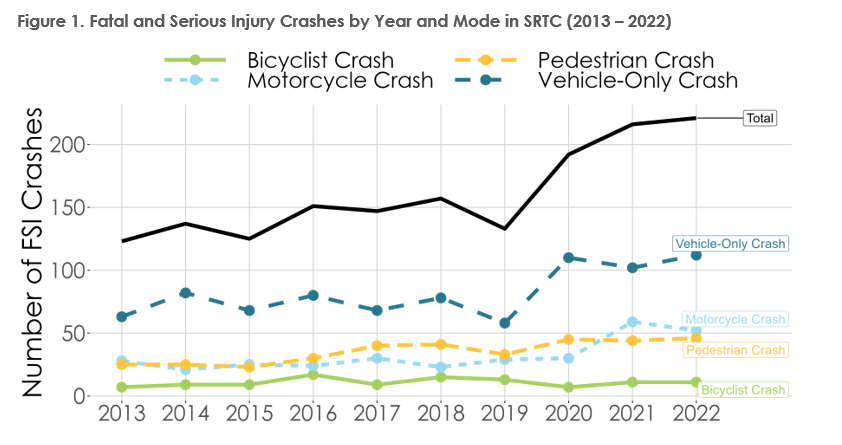
In the last five years, there were 919 fatal and serious injury crashes throughout Spokane County. Of those, 266 crashes involved pedestrians or bicyclists (Figure 2). Not only have these crashes affected those who are injured but also countless others, including family members, friends, and emergency responders who have been impacted by these crashes.
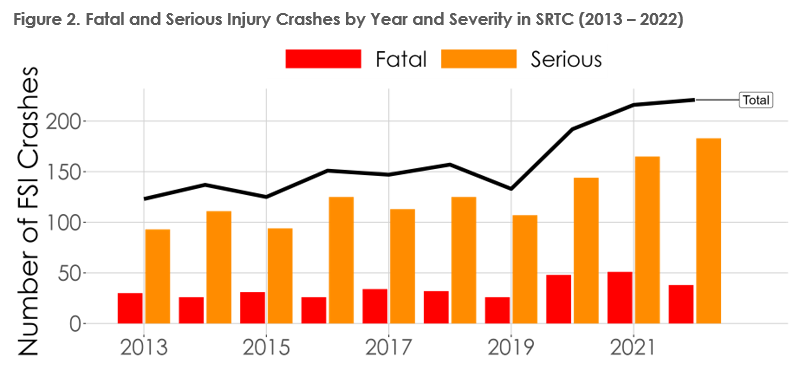
These crashes take place both on busy downtown streets and more rural roads across 14 local communities in Spokane County.
Additionally, speeding and distracted driving were the two most common behaviors that contributed to fatal and serious injury crashes (Figure 3). The cities of Spokane and Spokane Valley, as well as Spokane County, have all sought to address the issue with local road safety plans, but the problem is regionwide and needs a coordinated regional effort.
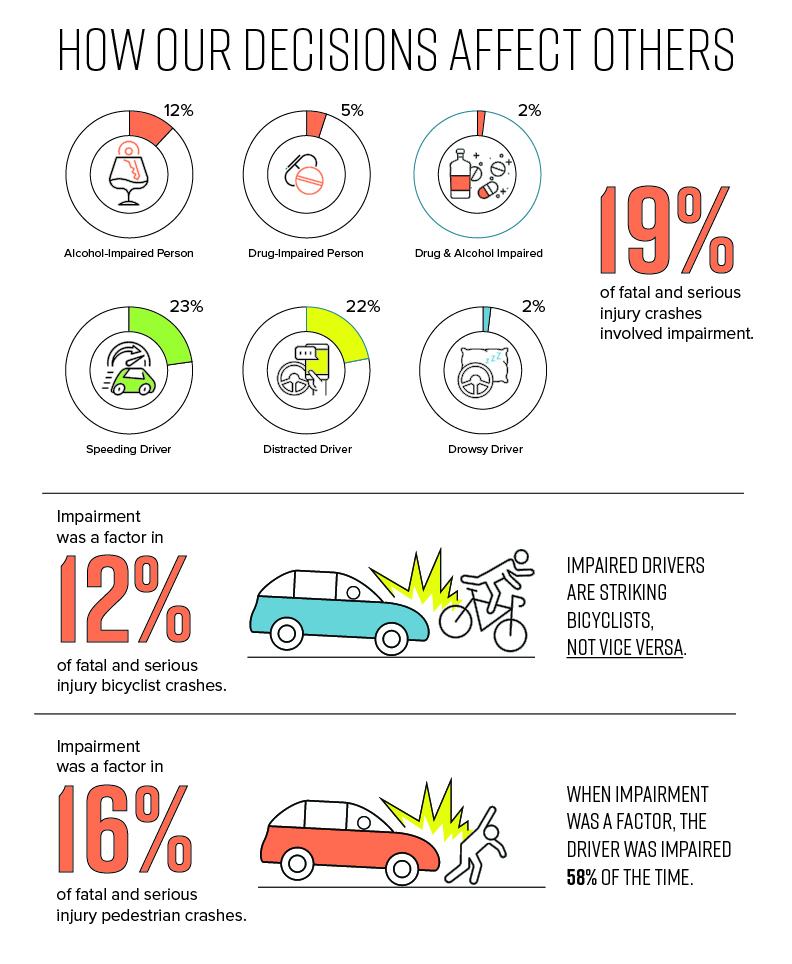
Addressing Transportation Safety in Our Region
The Spokane Regional Transportation Council (SRTC) is the lead transportation planning agency for the entirety of Spokane County.
SRTC develops plans and programs that coordinate transportation planning throughout the Spokane region and all its local jurisdictions. SRTC’s Board of Directors is made up of elected officials across Spokane County, who make important planning and funding decisions for the region.
The SRTC Board of Directors has identified transportation safety as a top priority, and SRTC was awarded a $400,000 federal grant to develop a Regional Safety Action Plan.
The Regional Safety Action Plan will identify strategies, projects, and policy changes to move Spokane County toward zero fatal or serious injury crashes and leverage available funding to make them happen. The professionals working on this plan are analyzing fatal and serious injury crash data and developing solutions with the United States Department of Transportation’s safe systems approach.
The safe systems approach aims to eliminate fatal and serious injury crashes not only through road design choices that help reduce the severity of the crash but also by preparing for human mistakes. There is not a one-for-all solution for transportation safety, which this system accounts for.
The six principles of the Safe System Approach are: Death/serious injury is unacceptable, humans make mistakes, humans are vulnerable, responsibility is shared, safety is proactive, and redundancy is crucial. These principles are applied to five focus areas: safe vehicles, safe speeds, safe roads, safe road users, and post-crash care (Figure 4). This approach creates multiple layers of protection that both prevent crashes from happening and reduce the harm caused when a crash does happen.
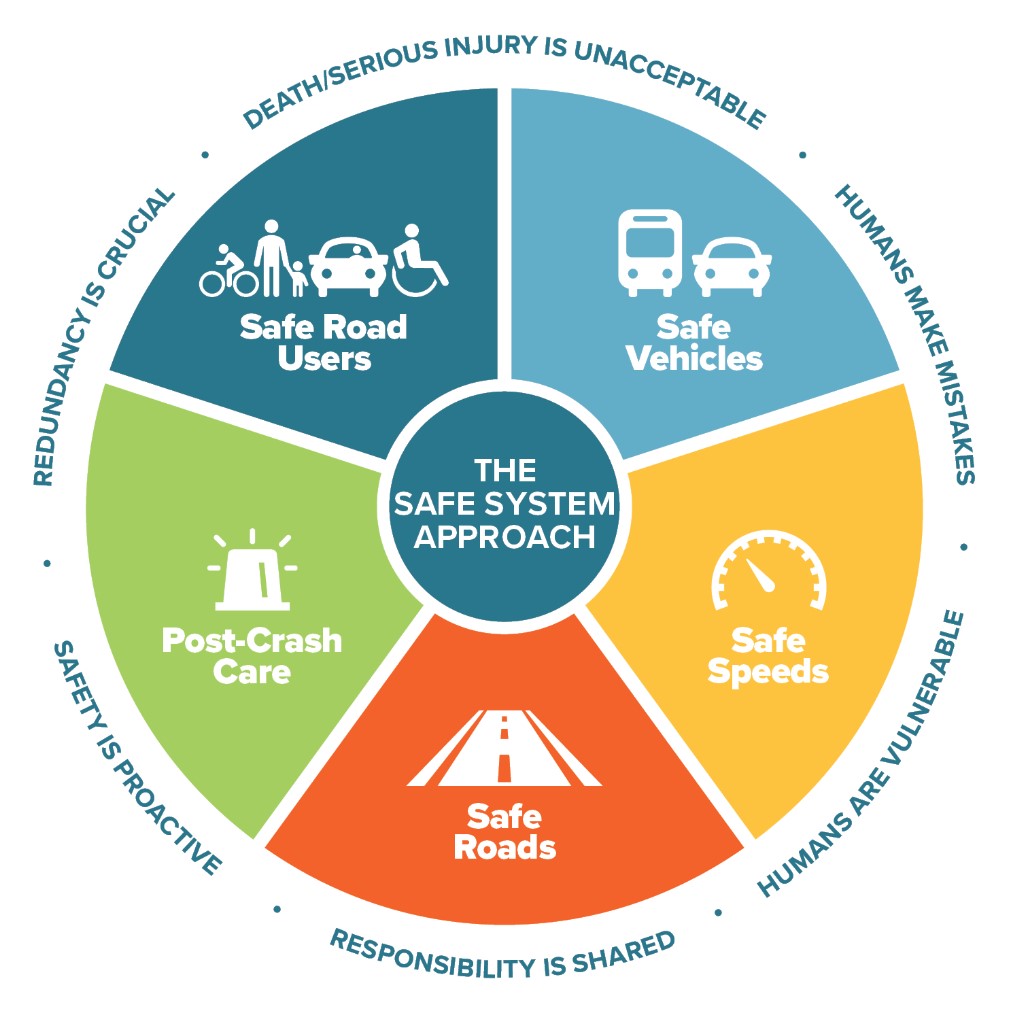
SRTC’s Regional Safety Action Plan will identify crash trends and develop safety-related transportation solutions for Spokane County, including the cities of Airway Heights, Cheney, Deer Park, Liberty Lake, Medical Lake, Millwood, Spokane, and Spokane Valley and the towns of Fairfield, Latah, Rockford, Spangle, and Waverly.
Through the Regional Safety Action Plan, SRTC aims to make the region’s communities eligible for vital safety improvement funds. For example, the City of Spokane used its Vision Zero Action Plan to secure $9.6 million in federal funding to improve crash-prone roadways and intersections.
With the Regional Safety Action Plan, other jurisdictions will be able to follow suit and apply for funding to implement safety improvements.
How You Can Provide Input
You can participate in the planning process by visiting the Regional Safety Action Plan StoryMap. Here, you can learn more about the project and identify your safety concerns. Near the bottom of the web page or by clicking Interactive Map Survey, you’ll find the map where you can mark a specific location with a pin and provide comments about what makes that location feel unsafe.
This map will be open for your feedback through March 15, to provide feedback that will be incorporated into the Regional Safety Action Plan.
For more information on the plan as a whole, visit the Regional Safety Action Plan web page.
Other SRTC Resources
If you would like to learn more about transportation in our region, get involved, or tune in to SRTC public meetings, visit www.srtc.org.
You can call, email, or visit SRTC, Monday–Friday, 8am–5pm, with any transportation questions or comments you have. Here are the various ways to contact the SRTC:
- Call: 509.343.6370
- Email: contact.srtc@srtc.org
- Visit: 421 W Riverside Ave, Suite 500, Spokane, WA 99201
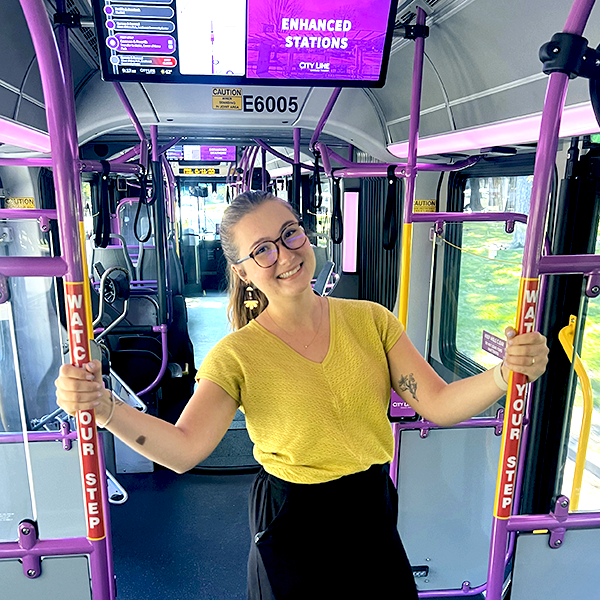
Savannah Hayward is the Communication and Public Relations Coordinator for the Spokane Regional Transportation Council (SRTC). At SRTC, she takes on a variety of different roles and projects, including outreach for safety and participation in equity efforts. Hayward loves working in the public sector, where she can help do important work and make a difference in her community. She graduated from Whitworth University in May 2023 with a degree in Strategic Communication.
Tags: accident, biking, community, death, fatal, impaired driving, injury, input, regional safety action plan, safety, Spokane Regional Transportation Council, SRTC, traffic, transportation, vehicles, walking
